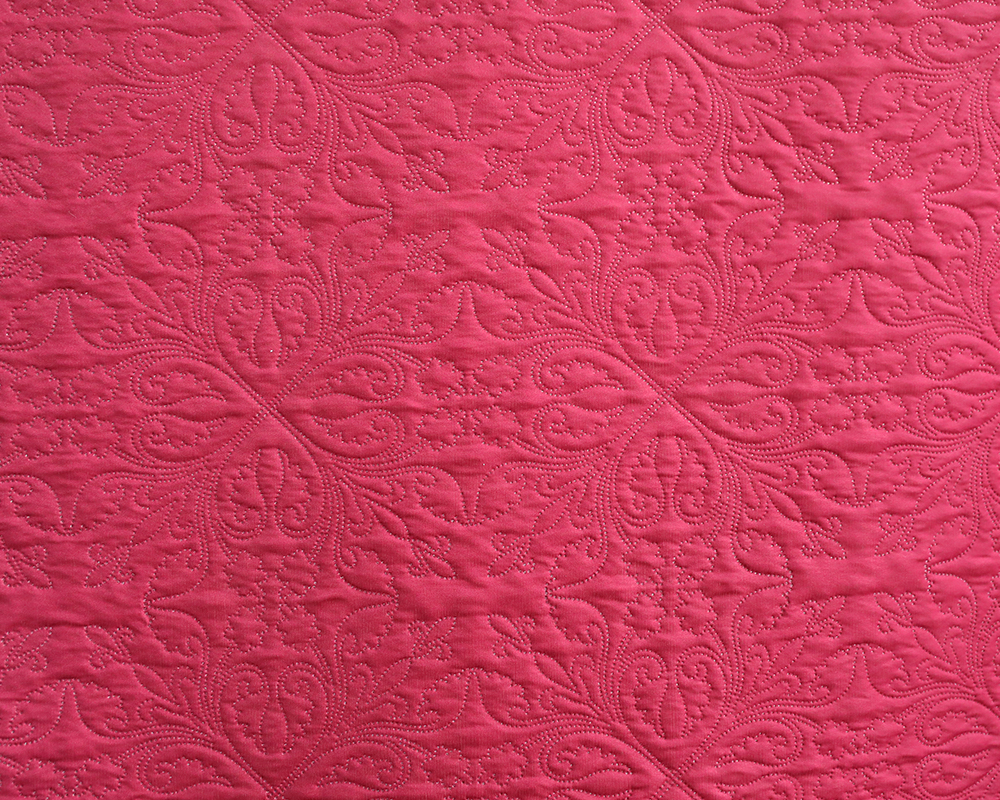Search...
Dyed ultrasonic fabric can significantly impact the texture and feel of fabrics compared to traditional stitching methods. Here are the key differences and effects:
Ultrasonic bonding fuses the fabric layers together without the use of thread, creating smooth, uniform seams. This process avoids the raised, sometimes bulky seams that can result from traditional stitching, leading to a smoother overall texture.Sewing with thread can create seams that are more pronounced, which can be felt on the skin. The thread itself can add texture, especially if thicker threads or multiple layers of stitching are used.
Since ultrasonic seams do not involve the insertion of a thread, the bonded areas can remain softer and more flexible. This is particularly beneficial for fabrics intended to be close to the skin, as it enhances comfort without the irritation that can sometimes be caused by thread seams.
Depending on the fabric and thread used, traditional stitching can sometimes lead to stiffer seams. This might slightly reduce the flexibility of the fabric, especially in areas with heavy stitching or reinforcement.
The bonding process can result in seams that are not only smooth but also very strong. However, in some cases, the heat and pressure applied during ultrasonic bonding may slightly alter the fabric's texture around the seam, making it firmer or more compact compared to the rest of the fabric.
Stitched seams, while generally strong, may allow for more give and movement, which can maintain the fabric's natural feel better in some contexts. However, traditional seams might also become loose or unravel over time, affecting the fabric's consistency.
The aesthetic of ultrasonic bonding is often more refined, with a clean, seamless look that enhances the fabric’s smoothness. Tactilely, this translates to a fabric that feels more continuous and less interrupted by seams.Stitching can be both functional and decorative, adding texture and visual interest to fabric. However, the tactile experience of traditional stitching can vary, with seams being more noticeable to the touch.
This method eliminates the need for additional materials like thread, which can reduce bulk and weight at the seams. The result is a lighter, more streamlined fabric that maintains its softness.Depending on the stitch type and thread, traditional seams can add bulk and weight, particularly in areas with multiple layers or heavy stitching.
Works best with synthetic fabrics like polyester or nylon, where the heat can easily bond the materials. These fabrics tend to retain their softness and flexibility better when bonded ultrasonically.Can be used on a wider range of fabrics, including natural fibers like cotton and wool. However, the texture and feel of the fabric can be more influenced by the type of thread and the tightness of the stitching.
Dyed ultrasonic fabric generally provides a smoother, softer, and more uniform texture compared to traditional stitching methods. The lack of thread and the seamless bonding process result in a fabric that feels more comfortable against the skin, with less bulk and greater flexibility. However, the choice between ultrasonic bonding and traditional stitching ultimately depends on the specific application, fabric type, and desired aesthetic or functional outcome.


 English
English
 中文简体
中文简体
 Español
Español





.jpg?imageView2/2/format/jp2)






